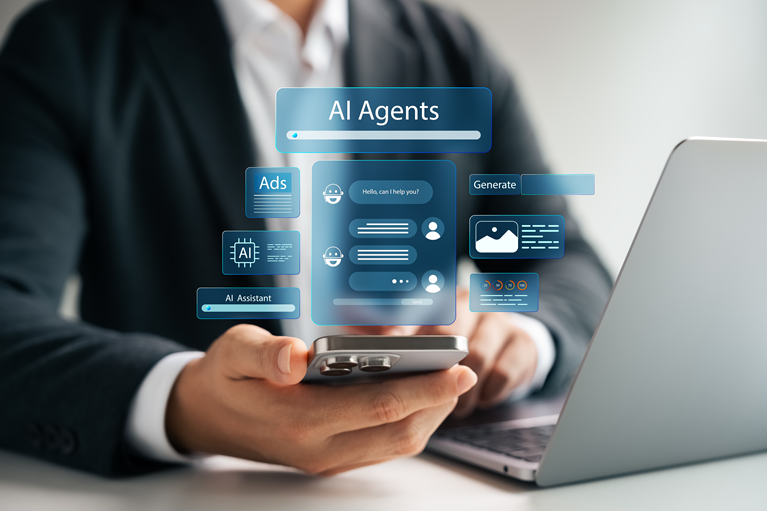As part of the Salesforce Architecture and Innovation Board, we’re constantly exploring technologies that can potentially transform business as usual. Over the past year, we’ve been deep-diving into Salesforce’s evolving AI ecosystem—most notably, Agentforce, the company's bold step into the world of Agentic AI.
We built multiple AI agents to understand their capabilities, tested them across real-world scenarios, and put Agentforce through its paces. The results? A mix of wins and misses, and eye-openers—and a clearer answer to the big question:
Can AI fully replace human agents? Let's find out!
Evolution of Salesforce AI
At Dreamforce 2024, Salesforce pivoted to Agentic AI, enabling intelligent, industry-specific assistants that don’t just support—but act.
-min.png)
Agentforce combines large language models (LLMs), large action models (LAMs), and automated workflows to drive real-time, context-aware decisions and actions across the Salesforce platform.
What is Agentforce?
Agentforce is Salesforce’s foray into Agentic AI, a fusion of AI automation, large language models (LLMs), large action models (LAMs), and intelligent workflows that promise to transform how businesses interact with customers with advanced AI. It is an ecosystem designed to deliver smarter, faster, and more efficient service at every customer touchpoint.
Unlike general-purpose AI platforms like Microsoft Copilot, Agentforce is purpose-built for Salesforce. It taps into platform-native data to:
- Automate customer service tasks
- Suggest relevant responses
- Predict actions
- Execute decisions autonomously
This results in faster resolutions, better agent experiences, and more satisfied customers — without needing third-party add-ons or complex integrations.
Lessons from the field: our experiments with Agentforce
With Agentforce, we explored Agentic AI’s potential to replicate human decision-making across Salesforce’s ecosystem—Sales, Service, Data Cloud, Field Service, and more.
Early on, a process-driven mindset held us back. By focusing on predefined scenarios, our AI agents behaved more like scripted bots than adaptive assistants. This highlighted a key insight: Agentic AI isn’t just about predictions—it thinks, learns, and acts in real time.
Embracing this shift, we designed intelligent agents that combine AI’s speed with human intuition, pushing the limits of automation while addressing its gaps. Our mission? To find out if AI can truly replace human agents.
The use cases are split into two parts: where AI excels with impactful solutions and where human traits—like empathy, creativity, and urgency—are still essential to address complex customer needs.
Use cases where AI excels
Smarter workflows, fewer hassles
Banking and financial services: A customer wants a home loan and seeks assistance through an AI agent on the financial institution’s website.
Without Agentforce: Customers manually fill lengthy forms, recall and enter financial details, and upload documents themselves. Sales teams handle repeated queries, validate data formats, fetch CIBIL scores, and manage each loan step separately—resulting in slower processing and inconsistent experiences.
With Agentforce: An AI-based loan agent handles the full journey—from answering loan queries and calculating eligibility to auto-validating details, fetching credit scores via APIs, and submitting the application. It ensures a fast, guided, and seamless digital process with minimal human input.
Effortless multitasking
Manufacturing and Renewable Energy: A customer contacts support via chat regarding an issue with their purchased solar panel and seeks quick assistance.
Without Agentforce: Manual processes dominate customer service: issues are explained without system guidance, agents search histories by hand, diagnoses require reviewing scattered documents, technician scheduling causes delays, and all case management lacks automation.
With Agentforce: The System streamlines service delivery. It retrieves customer purchase and warranty data, diagnoses using a knowledge base, recommends technician visits, and auto-classifies cases. The workflow automatically routes cases, suggests relevant products, schedules inspections, creates summaries, and generates follow-up communications.
Hyper personalized experiences
Healthcare: A patient suffering from chronic migraines contacts an AI-enabled medical advisor for prescription refills and appointment scheduling.
Without Agentforce: The patient must memorize their medical history and inform the agents whenever they need to seek advice or schedule an appointment. A lack of medical details often impacts the permanent treatment of the patients.
With Agentforce: Agentforce remembers patient history, retrieves past conversations, and pre-fills prescription details for permanent treatment. It then provides personalized recommendations based on previous consultations.
Unlocking the data power
Insurance: A customer submits an auto accident claim with scanned police reports and handwritten statements.
Without Agentforce: Without AI, human agents must manually extract policy numbers, claim details, and damage assessments from documents. Further, manual errors in data entry delay processing.
With Agentforce: Agentforce uses OCR tools to scan and extract information from documents and automatically update claim records. It flags inconsistencies or missing details for faster decision-making.
Where humans still rule
Empathy and emotional intelligence
Delayed shipment: A customer reaches out to support to check the status of a delayed shipment and requests an earlier delivery
With Agentforce: Agentforce retrieves real-time shipment details, identifies disruptions, and shares delay reasons, expected delivery timelines, and refund policies using knowledge articles and system data. While it offers trained empathy for predefined scenarios, it may miss nuances in new or untrained situations.
With human advantage: Additionally, a human agent recognizes the service lapse, expresses genuine empathy, and takes proactive steps, such as offering a freight discount and arranging an earlier delivery to maintain the customer relationship and support their business.
Relationship building
Travel: A VIP traveller casually mentions a special occasion or emotional need—such as an anniversary or a recent loss, expecting a thoughtful response.
With Agentforce: AI recognizes keywords or past experiences but lacks emotional intelligence, spontaneity, and the ability to personalize beyond.
With human advantage: A human agent senses emotional cues, proactively curates a thoughtful response, and builds a lasting emotional connection with the traveler.
Act with urgency
E-commerce: A high-value customer’s urgent order for baby medicine is delayed due to supply chain issues.
With Agentforce: AI suggests alternatives and sends apologies but cannot take real-time action to prioritize urgency.
With human expertise: A human agent manually arranges an alternate delivery from another store, ensuring immediate fulfilment and customer loyalty.
Negotiation skills
Retail VIP customer retention: A high-spending customer threatens to cancel their membership over a price increase.
With Agentforce: AI suggests a standard discount (e.g. 5% off) but fails to recognize the customer's long-term value.
With human expertise: A human retention specialist reviews the customer’s history and offers exclusive perks (e.g., early access and a personal shopping consultant). They craft a win-win solution that retains the customer without heavy discounting.
Augmentation, not Replacement: the human-AI symbiosis
AI boosted speed and efficiency: It handled repetitive tasks like FAQs, order tracking, and data processing. In healthcare, Agentforce retrieved patient histories instantly; in manufacturing, it tracked past purchases to suggest missing products.
AI-enhanced customer experience: It reduced frustration by remembering past interactions and offering proactive updates. In insurance, it automated claims with document scanning and data extraction, slashing processing time.
Humans delivered emotional intelligence: In high-stress scenarios like service failures or urgent medical orders, only human agents could offer empathy, reassurance, and personalized care.
AI-assisted but humans-led: Agentforce automated routine tasks, like shipment tracking, freeing teams to focus on complex, value-driven work—proving AI is a tool, not a replacement.
AI drives insights, and humans handle the unknown: While AI flagged anomalies and data mismatches in crucial scenarios like appraising loans, human intuition stepped in where data was limited, making adaptive, real-world decisions AI alone couldn’t manage.
The verdict: It's not AI vs. humans—It's humans with AI
Did Agentforce replace humans? No—and it didn’t have to.
AI handled the routine: FAQs, tracking, and data processing. Humans stepped in where it mattered most—empathy, creativity, problem-solving, and personalized care.
The real takeaway? It’s not AI vs. humans—it’s AI with humans.
Agentforce boosted efficiency, allowing agents to focus on meaningful connections and complex challenges.
Across industries, AI streamlines operations, but when urgency or emotion enters the picture, human agents make the difference. This powerful partnership lies in the future of customer experience.
Ready to make Agentforce work for you?
At Nagarro, we deliver tailored Salesforce solutions that transform customer engagement. Whether you're just starting with AI or looking to scale your Agentforce deployment, we help you customize and integrate with confidence.
Let’s co-create intelligent customer experiences faster, smarter, and more human. Talk to us!






